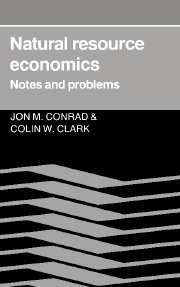Preface
Published online by Cambridge University Press: 05 June 2012
Summary
This book was undertaken to bridge what we regard as a gap between the theory of resource economics and the application of the theory, which typically involves the use of statistical and numerical methods. While the dearth of empirical studies in resource economics is largely the result of limited or nonexistent data, another impediment is the incomplete or disjointed way in which students are exposed to theory and the methods of applied analysis. One way of narrowing the gap between theory and practice is through the solving of numerical problems. In the process, the student is forced to make the theory operational (to see how it works) and must often apply numerical techniques to solve the equations which define a potential solution.
The numerical problems in this volume do not involve the application of econometric or other statistical techniques to estimate the parameters of a model. Instead, parameter values will be given (sometimes they are based on previous empirical research) and the exercise is to structure and solve a well-posed resource allocation problem. Thus the theory (and artistry) of measurement, data manipulation, and the selection of appropriate techniques for estimation of parameters within a resource or environmental system are not covered in this book. While the student is spared this dimension of applied research, we hope that he or she will find the remaining tasks of problem formulation and solution challenging, instructive, and enjoyable.
- Type
- Chapter
- Information
- Natural Resource EconomicsNotes and Problems, pp. ix - xPublisher: Cambridge University PressPrint publication year: 1987
- 1
- Cited by



